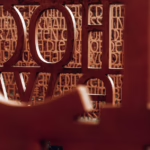Periodic Patterns: Unveiling the Beauty of Chemistry Wallpaper
Introduction
Chemistry often evokes images of beakers, test tubes, and equations, but there exists a subtle beauty within its structure that is often overlooked. The periodic table, a cornerstone of chemical science, is more than just a list of elements; it is a tapestry of relationships, patterns, and aesthetics. This article will explore the intricate beauty of chemistry through the lens of periodic patterns, delving into the visual and conceptual appeal of chemistry wallpapers inspired by these structures.
The Aesthetic of the Periodic Table
The periodic table of elements is an iconic representation of the building blocks of matter. Each element is not merely a symbol; it embodies unique properties, behaviors, and histories. There are several ways in which the periodic table serves as a source of inspiration for artistic expression:
-
Color and Design: Different periodic table designs utilize colors and layouts that can transform the table into an artwork. These designs often categorize elements by their properties, producing visually striking patterns.
-
Elemental Connections: The arrangement of elements in the table reveals connections and relationships that can be artistically represented. For instance, the groupings of alkaline metals and halogens illustrate the periodic trends in reactivity and atomic structure.
-
Historical Context: Many designs pay homage to the history of chemistry, integrating illustrations of famous chemists or historical experiments that led to the current understanding of elements.
The Mathematical Beauty of Chemistry
Chemistry is inherently mathematical, with patterns and sequences that can be observed in atomic structures and properties. The beauty lies in the predictability of these patterns:
-
Atomic Numbers: Elements are arranged in order of increasing atomic number, revealing a natural order behind the chaos of chemical reactions. This ordering allows for a unique insight into the periodicity of chemical properties.
-
Trends: Moving across periods or down groups, distinct trends emerge, such as electronegativity, ionization energy, and atomic radius. These predictable patterns help underscore the underlying order in nature.
Visual Inspiration from Nature
Nature itself is filled with periodic patterns. The symmetrical arrangement of leaves, the spiral of a seashell, or the repetition of honeycomb cells can reflect natural periodic laws. The interplay between chemistry and nature invites artists to explore these concepts further.
- Biomimicry: This design philosophy draws on patterns found in nature, using them as a guide for new creations. Similarly, chemistry wallpapers can incorporate natural patterns that mimic the aesthetics of molecular structures, creating a bridge between art and science.
Chemistry Wallpapers: A Canvas for Creativity
In recent years, chemistry-inspired wallpapers have gained popularity. These designs not only serve as educational tools but also as inspiring decor. The use of colors, patterns, and artistic elements contributes significantly to their allure.
-
Educational Wallpaper: Designs that incorporate element symbols, atomic numbers, and properties serve as a constant reminder of the beauty and complexity of chemistry. These wallpapers can beautify classrooms, laboratories, and study spaces.
-
Artistic Interpretations: Many artists embrace the challenge of depicting chemical structures, reactions, and even atomic models in various mediums, from digital illustrations to paint. Their work often brings a whimsical or surreal perspective to complex scientific concepts.
-
3D Representations: Advancements in technology allow for the creation of three-dimensional artworks that bring chemical structures to life. These immersive designs can inspire awe and appreciation for the subject.
Cultural Impact of Chemistry Wallpaper
The evolution of chemistry wallpaper has also been influenced by cultural movements. As science becomes more accessible to the general public, the aesthetics of chemistry have been embraced in different ways:
-
Pop Culture Influence: Movies, television shows, and online platforms often feature chemical themes, and furniture or home decor inspired by these visuals has become increasingly popular.
-
Global Awareness of Science: As public interest in science increases, so does the demand for decorative elements that reflect scientific themes. Chemistry wallpaper serves as both an educational piece and a conversation starter.
The Role of Education in Promoting Chemistry Aesthetics
Integrating chemistry aesthetics into education can significantly impact student engagement and appreciation for the subject.
-
Interactive Learning: Educators can use chemistry wallpapers to create visually stimulating environments that enhance learning experiences. Dynamic designs can capture students’ attention and inspire a deeper interest in chemistry.
-
Collaborative Art Projects: Schools can encourage students to create their designs based on chemical relationships, making abstract concepts more tangible.
Conclusion
The periodic table and its inherent patterns reveal a beauty that can resonate with both science enthusiasts and artists alike. By embracing the aesthetics of chemistry, we can cultivate a greater appreciation for the wonders of the natural world.
Chemistry wallpapers represent a fusion of art and science, serving not only as decor but as a celebration of the intricate beauty of chemical relationships. As we continue to explore and expose the elegance behind chemistry, we pave the way for a future where art and science coexist harmoniously.
References
- Baker, L. R. (2011). The Periodic Table: A Very Short Introduction. Oxford University Press.
- Wang, Y. & Zhang, S. (2018). “Art in Chemistry: The Interplay Between Science and Aesthetics.” Journal of Chemical Education.
- Smith, J. R. (2020). Patterns in Nature: A Chemistry Perspective. Springer.
- Johnson, E. (2019). “The Artistic Side of Chemistry.” Chemistry World.
- Garcia, M. (2020). “Visualizing the Periodic Table: Design Inspirations from Nature.” International Journal of Art and Design.
This article provides an extensive overview of the intersection between the beauty of chemical patterns, the appeal of chemistry-inspired wallpapers, and the cultural impact of science and art. Further exploration can define a clearer understanding of how aesthetics can enhance education and public engagement with the sciences.
























Add Comment